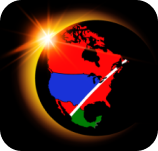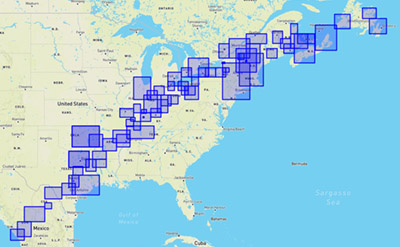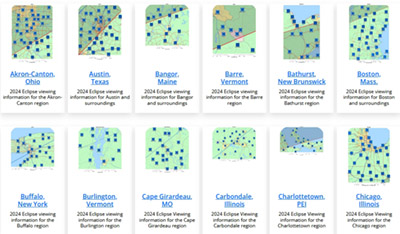We hope you enjoyed it!
viene a
América del Norte!
...¡Y queremos que todos lo vean!
¿Cómo se verá el eclipse total de 2024?
¡Haz clic en el mapa interactivo de abajo!
Te mostrará un aproximado de cuándo sucederá el eclipse.
La información exacta para MUCHAS más zonas está disponible en nuestras páginas de ciudad para el eclipse de 2024.
Mapa de la zona de Durango, mostrando en gris la trayectoria de la totalidad
Por favor, considera que todas las horas se muestran usando los husos horarios de verano, por lo que pueden estar adelantadas una hora con respecto a tu hora local.
(Eclipse2024.org no respalda o aprueba ningún sitio de visualización específico relacionado con el eclipse del 2024. La selección de un sitio de visualización adecuado, incluyendo las debidas consideraciones, el clima, la infraestructura, los viajes, la logística, los husos horarios, el evitar entrar en propiedad privada y las previsiones de seguridad, son responsabilidad exclusiva del observador del eclipse.)
DEBES usar protección ocular certificada ("lentes de eclipse")
cuando CUALQUIER parte del Disco Solar es visible.


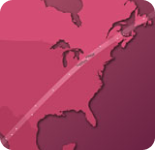
¡Norteamérica será testigo de otro eclipse total! Esta vez, la totalidad pasará también por México y Canadá, lo que les dará a los habitantes de toda Norteamérica la oportunidad de presenciar un impresionante fenómeno celeste.
Para ver la totalidad, hay que estar dentro de su trayectoria de totalidad; de lo contrario solo verás un eclipse parcial. Puedes conocer más detalles al respecto revisando nuestra sencilla guía de instrucciones para ver el eclipse.
Esta entrada del blog te dará información sobre el eclipse de 2024 visto desde la zona de Durango en Durango, México. Consulta los enlaces que te ofrecemos a continuación para más información sobre el eclipse solar total de 2024 desde otros lugares.
Esta entrada del blog te dará información sobre el eclipse de 2024 visto desde la zona de Durango en Durango, México. Consulta los enlaces que te ofrecemos a continuación para más información sobre el eclipse solar total de 2024 desde otros lugares.
Conforme la totalidad se mueva por México hacia el noreste, Durango es la siguiente ciudad importante que está en la trayectoria. Durango se encuentra casi a la mitad del camino entre la línea central y el borde sur de la trayectoria. O sea que, cuanto más al noroeste vayamos, más totalidad podremos ver.
El eclipse tendrá diferentes horas para distintos lugares. Utiliza el control del mapa de arriba para ver cuándo se producirá la totalidad durante el tiempo que el eclipse pase por la zona de Durango.
En la intersección de las carreteras 45 y 40D al norte de la ciudad, la totalidad durará unos 3m 56s. Mientras que, al sureste de la ciudad, donde la carretera 23 cruza con el río, solo se verán 3m 33s. Puede que 23 segundos más de totalidad no parezcan mucho, pero el día del eclipse tener ese tiempo extra sí será bastante agradable.
Asegúrate también de no estar demasiado lejos del sureste de la ciudad: En la carretera 45, el límite de la totalidad se encuentra más o menos por Nombre de Dios. La Colorada también está en el límite sur. Pero, si vas hacia el oeste por la 45, tendrás mucho más tiempo de oscuridad si llegas a Guadalupe Aguilera (¡4m 23s!). Si puedes moverte más al norte de ahí (por la carretera 23), la línea central estará justo después de Canatlán. Esta ciudad verá tres segundos más que en Aguilera. ¡Existen muchos lugares para poder ver el eclipse!

 Debido a la excelente ubicación de Durango, si sales de la ciudad únicamente conseguirás menos tiempo de oscuridad. En caso de que el clima no sea favorable, puedes ver tus diferentes opciones en el mapa de arriba.
¡Hay muchos otros magníficos lugares desde los cuales ver el eclipse!
Debido a la excelente ubicación de Durango, si sales de la ciudad únicamente conseguirás menos tiempo de oscuridad. En caso de que el clima no sea favorable, puedes ver tus diferentes opciones en el mapa de arriba.
¡Hay muchos otros magníficos lugares desde los cuales ver el eclipse!
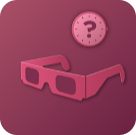 Sin embargo, si el Sol no se eclipsa POR COMPLETO, siempre hay que usar protección ocular certificada ISO ("lentes de eclipse") para verlo. DEBES que usar los lentes de eclipse para observar las fases parciales del eclipse.
Sin embargo, si el Sol no se eclipsa POR COMPLETO, siempre hay que usar protección ocular certificada ISO ("lentes de eclipse") para verlo. DEBES que usar los lentes de eclipse para observar las fases parciales del eclipse.
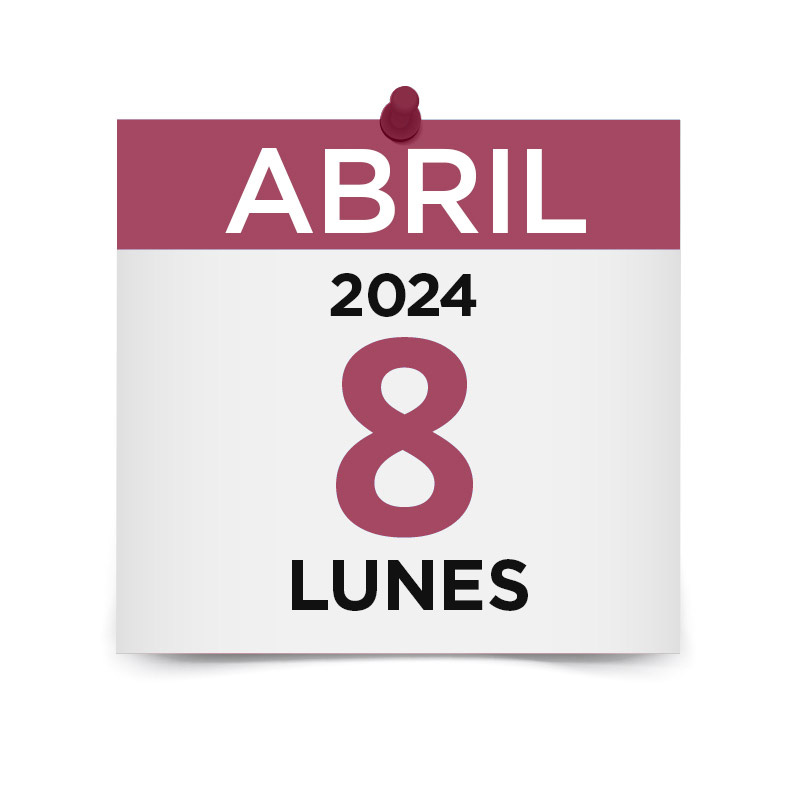
Durango está ubicado en el trayecto, ¡y será un excelente lugar para ver la totalidad!
El eclipse total empezará alrededor de las 12h12 CST, y el centro de la ciudad tendrá 3m 46s de totalidad.
Por favor, recuerda que la mayoría de las comunidades en México ya no utilizan el horario de verano. Nuestro mapa fue hecho cuando ese horario todavía estaba en uso, por lo que el tiempo que se muestra está una hora adelante de tu hora local.
El eclipse tendrá diferentes horas para distintos lugares. Utiliza el control del mapa de arriba para ver cuándo se producirá la totalidad durante el tiempo que el eclipse pase por la zona de Durango.

 Siempre recuerda la regla para usar protección ocular durante el eclipse. Si se ve CUALQUIER parte brillante del Sol, DEBES que usar los lentes de eclipse para observar este fenómeno.
Siempre recuerda la regla para usar protección ocular durante el eclipse. Si se ve CUALQUIER parte brillante del Sol, DEBES que usar los lentes de eclipse para observar este fenómeno.
 O sea, si puedes ver cualquier parte del Sol a través de los lentes (el Sol es demasiado brillante) y ¡no debes quitártelos! Si no puedes ver absolutamente NADA del Sol a través de los lentes de eclipse, entonces es seguro que te los quites. Pero, en el instante en que cualquier parte brillante del Sol sea visible de nuevo, tienes que volver a ponértelos (esto puede ocurrir incluso unos segundos después de habértelos quitado).
O sea, si puedes ver cualquier parte del Sol a través de los lentes (el Sol es demasiado brillante) y ¡no debes quitártelos! Si no puedes ver absolutamente NADA del Sol a través de los lentes de eclipse, entonces es seguro que te los quites. Pero, en el instante en que cualquier parte brillante del Sol sea visible de nuevo, tienes que volver a ponértelos (esto puede ocurrir incluso unos segundos después de habértelos quitado).
También tenemos una sección entera que ofrece instrucciones mucho más detalladas para ver el eclipse.
Sea cual sea el lugar desde el cual decidas ver el eclipse, asegúrate de planificar bien tu ruta y de checar el clima para asegurarte de que el día del eclipse tendrás buenos cielos.

Y no dejes de consultar el simulador de eclipses de Eclipse2024.org para cualquier otro lugar que quieras ver. ¡El simulador te mostrará exactamente cómo se verá el eclipse desde cualquier lugar que escojas!
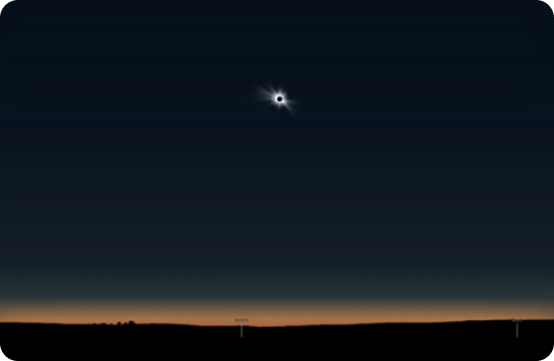
Si solo quieres ver el eclipse sin usar el Simulador, tenemos videos para el eclipse anular de 2023 y el solar total de 2024 vistos desde más de 2200 lugares que podrás encontrar en nuestro
canal de YouTube para el eclipse de 2024. Más fácil aún: ¡solo entra a nuestra página de videos del Simulador de Eclipses.
Eclipse2024.org les desea a todos BUENOS CIELOS el día del eclipse: 8 de abril de 2024.
Eclipse2024.org les desea a todos BUENOS CIELOS el día del eclipse: 8 de abril de 2024.
